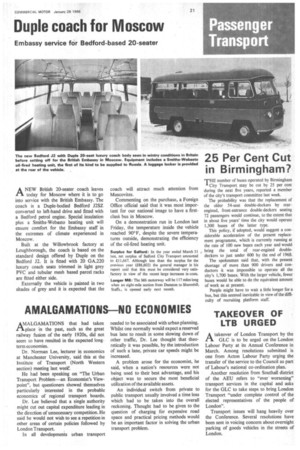AMALGAMATIONS—NO ECONOMIES
Page 23

If you've noticed an error in this article please click here to report it so we can fix it.
AMALGAMATIONS that had taken rVplace in the past, such as the great railway fusion of the early 1920s, did not seem to have resulted in the expected longterm economies.
Dr. Norman Lee, lecturer in economics at Manchester University, said this at the Institute of Transport (North Western section) meeting last week'.
He had been speaking on "The Urban Transport Problem—an Economist's Viewpoint", but questioners showed themselves particularly interested in the probable economics of regional transport boards.
Dr. Lee believed that a single authority might cut out capital expenditure leading in the direction of unnecessary competition. He said he would not wish to see a repetition in other areas of certain policies followed by London Transport.
In all developments urban transport needed to be associated with urban planning. Whilst one normally would expect a reserved bus lane to result in some slowing down of other traffic, Dr. Lee thought that theoretically it was possible, by the introduction of such a lane, private car speeds might be increased.
A problem arose for the economist, he said, when a nation's resources were not being used to their best advantage, and his object was to secure the most beneficial utilization of the available assets.
An individual switch from private to public transport usually involved a time loss which had to be taken into the overall reckoning. Thought had to be given to the question of charging for expensive road space and practical pricing methods would be an important factor in solving the urban transport problem.












































































































